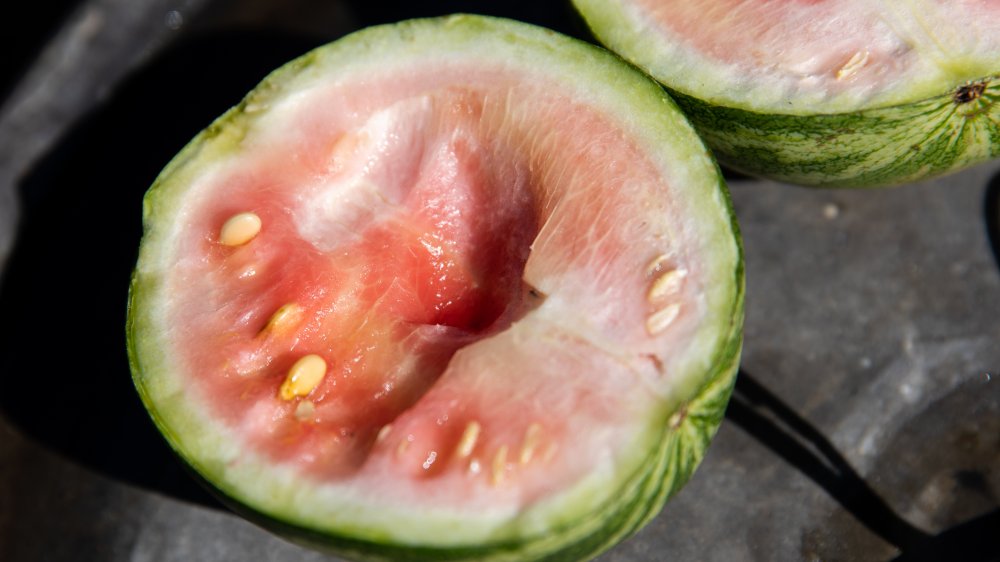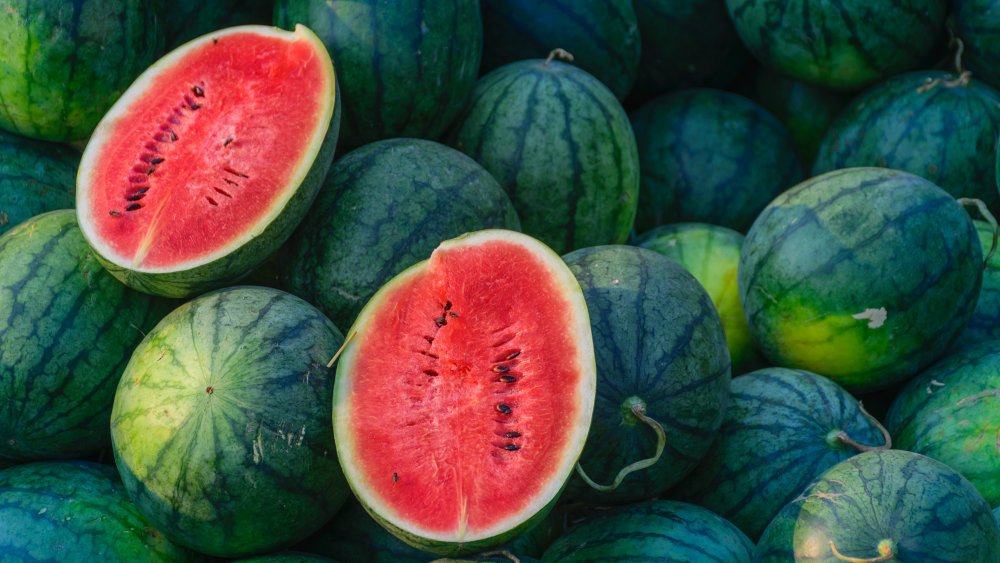You Should Never Eat Unripe Watermelon. Here's Why
Biting into a ripe, juicy slice of watermelon is basically a must on a hot summer day. But the keyword is ripe — if you end up bringing home a watermelon that needed a little more time on the vine, suddenly your refreshing summer snack isn't quite as tasty anymore. According to Treehugger, unlike other fruits, watermelons don't continue ripening after they've been picked, so your best bet is to avoid choosing an unripe melon if you can.
Eating watermelon that isn't fully ripe isn't dangerous, but it's not as good as a ripe melon. The first factor is obviously taste — there's no point in snacking on a flavorless watermelon. But in addition to flavor, ripe melons also have more nutrients than unripe ones. According to an article posted at Researchgate, The Journal of Food Composition and Analysis conducted a test on watermelons at four different stages of ripeness (white flesh, white-pink, pink, and red-ripe). Overall, the riper the watermelon was, the more beta carotene, lycopene, and other nutrients were found in the fruit.
According to LiveScience, lycopene is an antioxidant that's been linked with heart and bone health. Beta carotene is usually found in red-orange fruits and vegetables, and helps keep your immune system strong, as well as promoting healthy skin and eyes. When you eat unripe watermelon, these antioxidants haven't had the chance to fully develop, so your slice of fruit will be less nutritious than a ripe, juicy piece.
How to tell if your watermelon is ripe or not
You can't encourage an unripe melon to ripen once it's been picked, so you'll have to do your due diligence at the grocery store to make sure you snag a ripe one. Luckily, you can put your melon to the test before you commit to bringing it home. According to The Kitchn, the first step is to pick up a melon and see how it feels. Whether it's big or small, it should feel heavy for its size if it's ripe (you can always compare it to similar-sized melons and choose the heaviest).
Next, make sure you look over the whole melon. As The Spruce Eats notes, you don't want to buy a watermelon that has any cuts or bruises, but you can also tell if it's ripe by looking at it. If the watermelon has a yellow or light-colored spot on the bottom, it's ripe. If it has stripes all over, leave it in the produce section.
Finally, you can also try tapping on it. You might've seen people lightly knocking on watermelons at the store before, and it's another way to gauge how ripe they are. The Kitchn relates that ripe watermelons sound hollow when you tap on them, while under- or over-ripe melons will sound dull. A quick assessment at the store can save you the disappointment of bringing home a pale, flavorless watermelon, so be sure to test them out before adding one to your cart.

